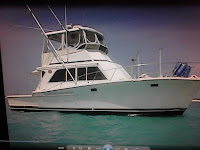NEWS From BoatUS
NEWS From BoatUS
Boat Owners Association of The United States
880 S. Pickett St., Alexandria, VA 22304
BoatUS Press Room at http://www.BoatUS.com/pressroom
Press Contact: D. Scott Croft, 703-461-2864, SCroft@BoatUS.com
Photo Available at: http://www.BoatUS.com/pressroom/previewImg/hiRes/966.jpg
Photo Caption: After the storm has passed now is good time to check up on the boat, says BoatUS.
After
the Nation's Cold Snap,
Boat Owners Should Check the Boat
ALEXANDRIA, Va., January 9,
2014 -- With temperatures now rising after record lows across much of the
nation, Boat Owners Association of The United States (BoatUS)
says now may be a good time to check on your boat in winter storage, and has
these five tips to ensure old man winter is kept at bay:Boat Owners Should Check the Boat
1. How low can she go? If your boat is stored in the water over the winter, are all of the above-water thru-hulls still well above the waterline? The weight of snow and ice can submerge above-waterline thru-hulls, including the exhaust (inboard boats), so start shoveling if you notice she's sitting lower in the water - plastic shovels and brooms are best. It's also a good time to check on your bubbler system.
2. Call me shifty: For boats stored on trailers, jackstands or cradles, ensure the boat hasn't shifted. Boats on stands/cradles should be level, while those on trailers should be slightly bow up. Boats over 26 feet should have at least three jackstands per side, with plywood under each if the boat is on dirt or gravel - check to see they haven't moved and are chained together to prevent them from being pushed away from the boat. You know the stands are in the right place when there is no hull deformation at the point of contact. If you see any problems with a jackstand, don't try to adjust it yourself; contact marina staff.
3. Blowin' in the wind: It's never a good idea to store a boat outside without a cover, and never tie a tarp to a jackstand as strong winds can get underneath the cover and yank the stand out. Tying off a tarp to trailer framing is acceptable. Also, a poorly fitted cover can sag, allowing huge amounts of water to pool, freeze and add substantial weight, so be sure they remain taut to allow snow and rain to easily slide off.
4. Nothing good comes from water in the bilge: Water or ice in the bilge means a leak. Try to find the source of the water during your walk-through and look for a temporary fix to plug the leak that will buy you time until the spring. Rock salt and nontoxic antifreeze may help you break up and remove any ice in the bilge, then dry it completely. If that's impossible, or the leaks aren't patched, add a few cups of nontoxic antifreeze.
5. A word for the wise on inside boat storage: If the boat is inside a heated storage building, it's always a good idea to winterize the boat in the fall as the BoatUS Boat Insurance Program receives freeze-related damage claims each year after winter storms have knocked out power, allowing inside temperatures to plummet. However, at this time of year, the only thing you can do is to keep in contact with your storage facility to advise you the moment of any power loss and give you the chance to inspect the boat.
###
About BoatUS:Boat Owners Association of The United States (BoatUS) is the nation's leading advocate for recreational boaters providing its over half-million members with government representation, services such as 24-hour on water boat towing as well as roadside assistance for boat trailers and tow vehicles, feature-packed boat insurance programs, money-saving benefits that include marina and West Marine shopping discounts, and vital information that improves recreational boating. Its member-funded BoatUS Foundation is a national leader promoting safe, clean and responsible boating.
| Share This: |


Comments